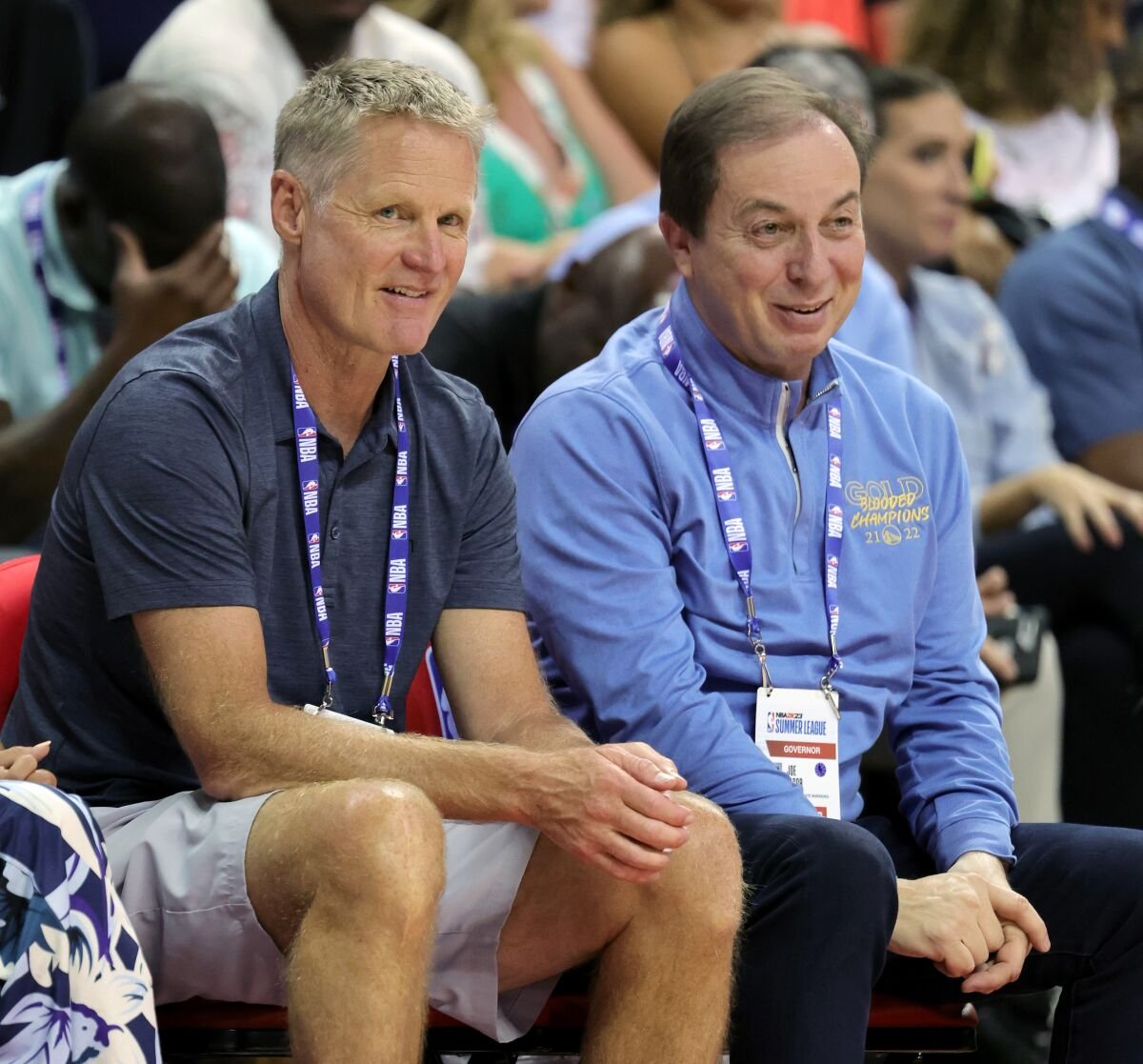Warriors’ Owner Joe Lacob Denies ‘Two-Timeline’ Plan: A Breakdown of His Recent Comments
Joe Lacob (right) made some intriguing comments about the Warriors’ direction over the past few years.
Image credit: Ethan Miller, Getty Images
In an interview with Madeline Kenney of Bay Area News Group, Joe Lacob completely dismissed the widespread notion that the Golden State Warriors have been executing a ‘two-timeline’ plan, which involves competing with their championship core of Stephen Curry, Klay Thompson, and Draymond Green while developing their young lottery picks such as Jonathan Kuminga and Moses Moody. Lacob stated that the only timeline the Warriors are on is winning championships and that there were never two timelines. In hindsight, this makes sense, given the Warriors just won the 2022 championship one year ago with their veteran core and did everything they could to put a solid cast of role players around Curry, Thompson, and Green. On the other hand, the Warriors gave Kuminga and Moody valuable regular season minutes to develop when Curry, Thompson, and Green were out at various points of the season. Head coach Steve Kerr then kept Kuminga and Moody out of the playoff rotation in 2022, despite giving Moody some key minutes in the Western Conference Finals (WCF). It seemed clear that the Golden State Warriors were enacting some form of a ‘two-timeline’ plan even though they were still winning championships.
Although all signs pointed to a ‘two-timeline’ plan in 2022, the Warriors seemingly shifted towards an all-in approach at the 2023 trade deadline. Their 2020 second-overall pick James Wiseman could not crack the rotation while Kuminga and Moody were not getting enough consistent minutes, so they essentially flipped James Wiseman for a crucial piece to their 2022 championship in Gary Payton II. This didn’t seem like a massive shift at the time, but it all made sense at the 2023 NBA draft. The Warriors used their budding young star Jordan Poole, their two 2022 draft picks Patrick Baldwin Jr. and Ryan Rollins, and two future draft picks to acquire Chris Paul. Then they drafted more experienced college players in the 2023 draft that might be able to contribute right away instead of going for more one-and-done development prospects like when they originally drafted Wiseman, Moody, and Kuminga. Now the Warriors are going all in to get win-now veterans and have demonstrated their willingness to give up their young players when necessary. The culmination of these offseason moves so far led to Joe Lacob denying the ‘two-timeline’ plan, but was he correct in his assessment?
Sure, the Warriors tried everything they could to get a 2022 championship, and that came to fruition. Also trading for Chris Paul is easily a win-now move that best positions themselves to win a 2024 championship. However, the dilemma lies in one question: why did the Warriors draft 19-year-old prospects in Wiseman, Moody, and Kuminga that needed big minutes to develop if the main goal was always to win a championship? This question alone establishes the Warriors’ desire for a ‘two-timeline’ plan because the Warriors wouldn’t have kept their lottery picks and drafted those young players if they weren’t trying to develop talent for the future. It’s understandable why Joe Lacob refuted the ‘two-timeline’ plan since the Warriors’ efforts still culminated in a 2022 championship, but the Warriors were clearly developing young talent and simultaneously competing for championships, a clear indicator of a multifaceted approach.
